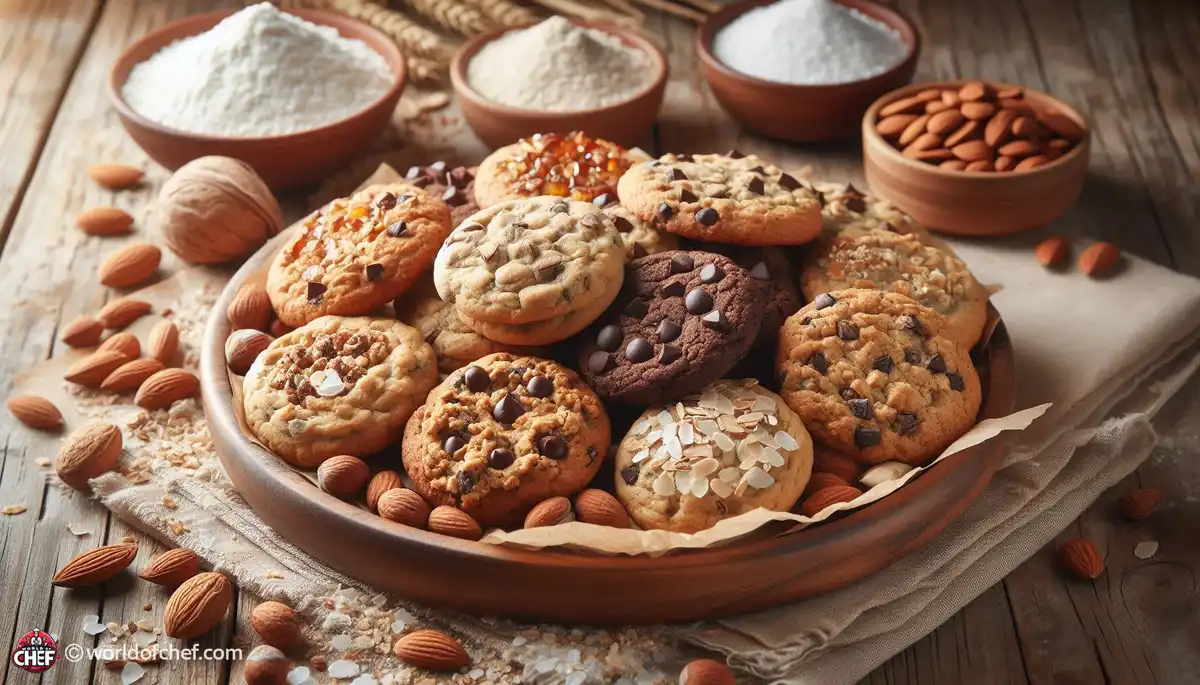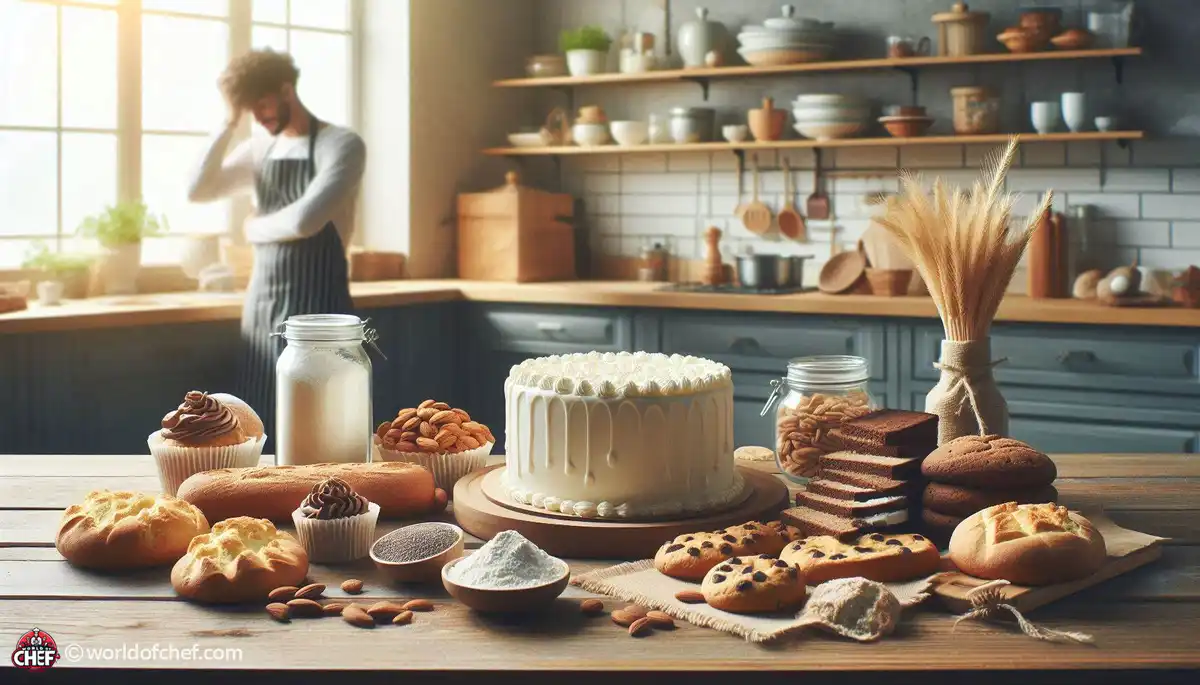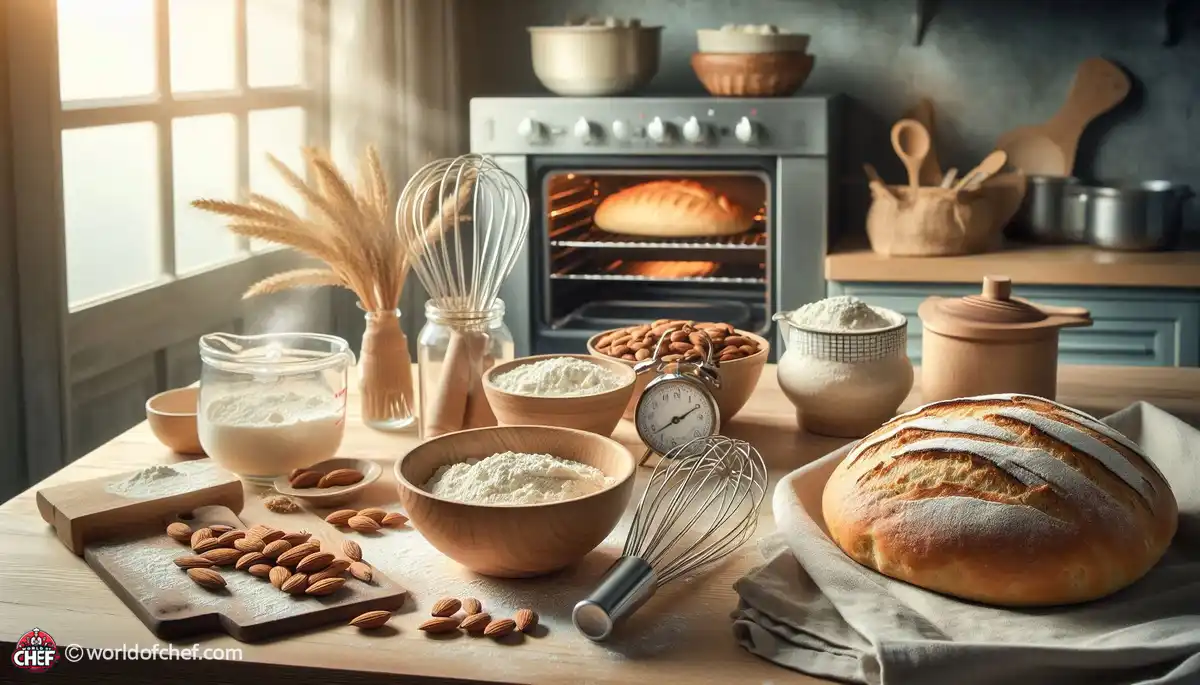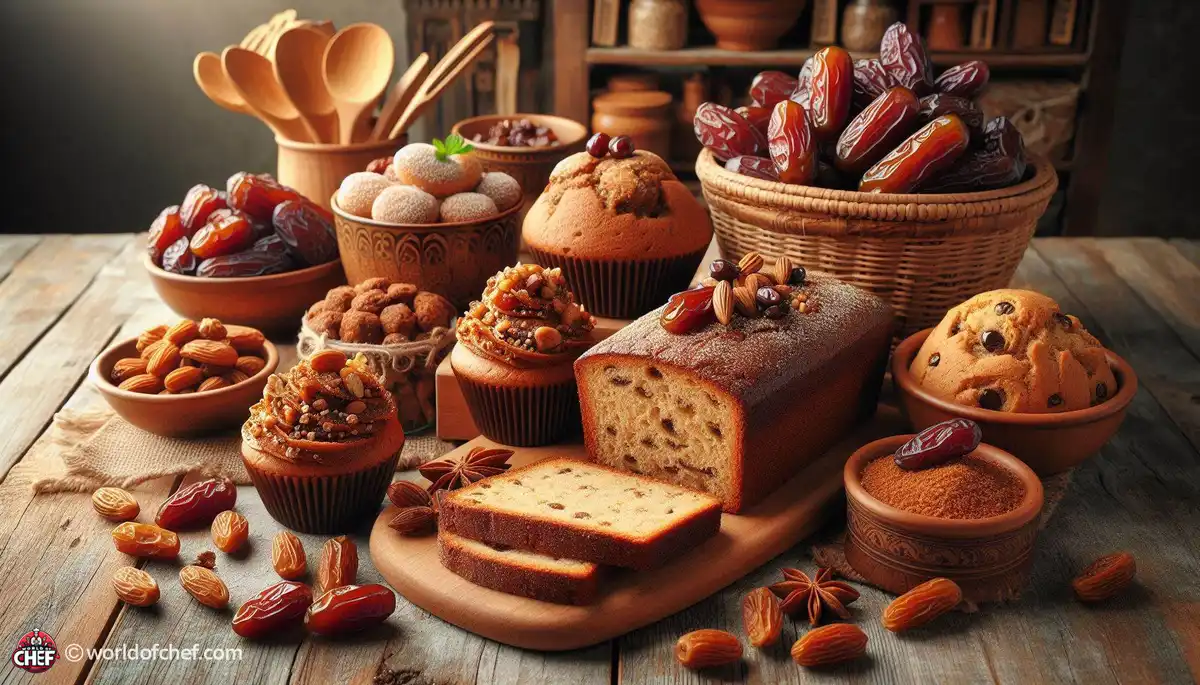
Understanding Oven Hot Spots and How to Bake Around Them
Russell Comeaux - Mar 30, 2025 - 13 min read


Baking the perfect gluten-free cookies can be very challenging, especially for those who have been baking traditionally. With the right techniques and ingredients, you will be able to whip up some delicious cookies that everyone will love. Here are some essential tips to guide you through the process and ensure that your gluten-free treats come out perfectly every time.
When baking gluten-free cookies, the right choice between your flour options is an indispensable part of the decision process. These days, there are loads of gluten-free flour selections available, each with their property distinct from others. Almond is one of the widely appreciated flour selections because it would add rich, sweet flavor and moisture in most of the cookie variants while also providing a hint of nuttiness, something that will be much relished. Coconut is known for its absorbency character, which would actually raise the liquid ratios present within your recipe. Other flours that are convenient to use include oat flour, brown rice flour, among others.
Using a blend of gluten-free flours typically yields the best results. A blend of flours can approximate the texture and flavor of wheat flour. Prepared gluten-free flour blends are also commercially available and are formulated to be balanced and to add structure, making them an easy choice for many home bakers. Through trial and error, you can find what works best for your cookie recipes.
Then, there is the issue of replacement ratio. Typically, you cannot simply substitute wheat flour with a gluten-free flour at a one-to-one replacement rate. You have to adjust according to the moisture absorption of the different flours. While a recipe may call for one cup of all-purpose flour, you will often need less or more of the gluten-free flour you select.
Using a gluten-free flour blend generally requires the use of a binding agent such as xanthan gum or guar gum. These ingredients assist in the structure of baked goods, replacing what gluten would normally provide. One general rule for adding xanthan gum is to add 1/4 teaspoon per cup of gluten-free flour to the dough for the best texture and chewiness in cookies.
Among the most forgotten things bakers forget to do is sift gluten-free flour, which is quite essential to aerate it, ensuring that clumps are broken to distribute the ingredients evenly in cookie dough. The process even helps remove some coarse chunks that may change the character of your cookies. For this reason, you ensure that your flour is sifted before mixing; hence a lighter, fluffier cookie that isn't much dense and even enjoyable will be produced.
Additionally, flour sifting can help take better measurements. Glutens are very finicky when using gluten-free flours because they change weights when packed. The benefit of sifting is ensuring proper measurement, which helps bring consistent results in the bake. It is just that one step that would result in a big difference overall for your cookies.
One of the joys of gluten-free baking is that you get to experiment with different flavors and ingredients. Gluten-free flours tend to have strong tastes, so this is a great opportunity to heighten your cookies with added flavors. You could add vanilla extract, cocoa powder, or spices such as cinnamon to make your cookies into something completely different.
You mustn't be afraid to get your mix-ins. The textures added by chocolate chips, dried fruits, and nuts create fantastic cookies. A new challenge for each type of gluten-free flour you might find is that the taste varies with every flavor, meaning that the permutations become truly exciting, depending on how you feel to tackle something new.
Understanding the Science behind Effective Dough Mixing Techniques
Dough mixing is something you would think is the simplest thing in the world to do, but, in reality, it's a little bit of an art form, especially when gluten-free ingredients are involved. As you combine your wet and dry ingredients, gentle mixing is the name of the game. If you overmix, cookies end up being dense; undermix and they'll have a texture that's off. You want to combine ingredients just until they're incorporated so they come out tender.
When using gluten-free flour, allow the dough to rest a little while. This resting time allows for hydration in the flour that may make a difference in the texture of your cookies. It also allows for flavors to combine for a more balanced taste. All the difference for your final product is in a 30-minute rest.
The most important role that temperature plays in baking, especially gluten-free cookies, is for the butter to be soft but not melted. Mixing this with sugars helps give the right texture so cookies do not spread and fall apart during baking. Melting your butter can cause you to refrigerate that mixture to firm it up again.
Also, the temperature of your dough will dictate how much your cookies will spread. If you desire thicker cookies, chilling for an hour or more helps prevent over-spreading. But if you like your cookies a little flatter, bake them right after mixing. Knowing how temperature affects your dough will make you make perfect cookie shapes every time.
Often times when adding them to the rest of the dough, you fold those mix-ins into the remainder of the dough as evenly as possible onto the dough, and ensure that through folding you leave an even amount in each cookie in case you overload the mixer.
If your dough is too crumbly or dry, you can add a little milk or flaxseed egg for a vegan one. Moisture could serve to hold everything together; that is, it'll help create a dough of more manageable consistency that's bound to bake well.
The dough needs to have the right consistency. If it is too dry, your cookies will be too crumbly. But if it is too wet, they spread too much when you bake them. It helps to take just a moment to check on your dough after mixing if it is too sticky to handle. You can even add a little flour at this point if it seems very sticky.
One may bake a test portion before baking the rest of the dough. Bake two cookies; check them and their spread and the flavor so you can adapt your remaining dough if possible, and ensure your last batch just the way you would like.
Add-ins matter in choosing good add-ins. Good add-ins do, too, contribute towards good flavors in your cookies. Let's go over some of the best add-ins, which ensure some fine flavors in your baked items
Mix-ins may well make or break your gluten-free cookies. Of course, chocolate chips are everyone's favorite, but one could try dark chocolate chips, white chocolate chips, or even butterscotch chips for an alternative. Nuts can also be added for some crunchy texture and depth of flavor. Dried fruits can also be added like cranberries or cherries which have a delightful sweet twist to them.
For healthier variants, you can add any seeds such as pumpkin seed or sunflower seed in your cookies for that crunched goodness. Shredded coconut adds a pleasant chewy texture and is full of tropical flavor cookies. The secret to baking is to mix the base flavor of your cookie complemented by the mix-in dough so that it never overpowers the taste, rather complements it and makes it a delightful choice.
Additional to the seasonal ingredients will bring depth to your gluten-free cookies. When autumn comes around, the pumpkin puree and spices give that flavor a warm, cozy feeling. During springtime, fresh berries brighten your cookies with freshness and zest. Seasonal ingredients give extra flavor but can make your cookies very colorful.
You can also use locally-sourced ingredients if those are available. This can actually help you in terms of fresh produce and different tastes not commonly found in your supermarket. It's the means of producing cookies which could be scrumptious and rooted in the community at the same time.
Adding mix-ins keeps the total sweetness in balance. Dried fruits and chocolate can really make cookies rather sweet; if your mix-ins are sweeter than your cookie base, adjust the amount of sugar called for in the recipe accordingly. Your cookies will end up wonderful but not sickeningly sweet.
Another trick is to use unsweetened or low-sugar alternatives for your mix-ins. For example, if you love coconut, try using unsweetened shredded coconut so that you do not add extra sugar. You will be able to create a well-rounded, flavored cookie that many people would love.
Don't shortchange spices and extracts when including gluten-free cookies to the bakery. Spice, like cinnamon or nutmeg, adds the richness of warmth and depth. If you want something a bit more piquant and complex, use almond extract or even a drizzle of vanilla to lift their flavor.
When experimenting you have to start with minute proportions to get the ratio. You can always increase it, but you won't be able to withdraw that spice once it mixes up. Keep a little note book handy to know what works so you would like to repeat the taste once again in the kitchen.
This preheating is essential when baking gluten-free cookies. If you do preheat your oven the correct way, then it will evenly bake and let your cookies rise accordingly. You should not rush when you set the oven right to bake the cookies because a perfectly heated oven always means the perfect baking for your cookies. For most of the gluten-free cookie recipes, 350°F is used as a temperature; however, depending on your specific recipe, that temperature might be higher or lower.
Baking times will vary depending on the size of your cookies and how thin they are. You don't want to pull your cookies out too early, either, because they will continue to firm up as they sit. This is especially a problem with gluten-free recipes, which can be sometimes tricky to judge because the texture is so different.
Use parchment paper when baking cookies: This is a great way to ensure that your cookies bake evenly and do not stick to the baking sheet. Additionally, cleanup is much easier since you can lift the paper off the tray after baking. If you feel that your cookies spread too much, lightly grease the parchment paper or use a silicone baking mat for extra grip.
Parchment paper will also help you retain the texture of your cookies. Whenever you bake a cookie with higher moisture content, the parchment will absorb some of that moisture, and you may get a better texture. This is one of the simple steps that produces great results.
This makes knowing when gluten-free cookies are done challenging. Edges should be golden, with centers just soft to the touch when they are done baking; they will firm as they cool. If they get too dark, they are overbaked and crumbly, so better safe than sorry.
If you're still unsure, you can just take a test cookie out of the oven a minute or two early to see how it bakes up. This trial-and-error method can then help you gauge the best baking time for your particular recipe, ensuring you always get the perfect cookie every time.
Same with letting the cookies cool off as in baking, is allowing them to fully get cool. Transfer all of them to a wire rack the moment you took it out from the oven, to let it totally get cool. This is because soggy may also come about in cookies once not well cooled. Further, circulating fresh air within them facilitates retaining the crunch of cookies.
Let them sit for too long on the baking sheet-they'll keep cooking and end up drying out. Pull them too early, however, and you risk crushing them. The best results of course, will come about when they have cooled somewhat on the sheet before their transfer to the rack. How to Store Cookies: Serving and Storage
Store them first to keep the gluten-free cookies fresh and delicious. Cool cookies completely and pack them into an airtight container. When your cookies are stacked without cooling completely, moisture gathers and your cookies become soggy. As an additional freshness option, place parchment paper between cookies when piling them together.
You can freeze them in longer storages. You just stack them in a freezer-friendly bag or container with spaces between layers using parchment papers. When you feel it's time to eat, then all you have to do is let them thaw at room temperature or put them into the microwave for some few seconds. Freezing saves them from losing flavor or texture, and this might make them convenient snacks sometimes.
Nothing compares to the fragrance of fresh-baked cookies circulating throughout the house. These cookies are best enjoyed with a glass of cold milk or your favorite non-dairy substitute for that great taste. They can be enjoyed with ice cream to create a decadent dessert for impressing and pleasing family and friends.
Don't be afraid to think outside the box about how you want to use these cookies for serving ideas. Crumble them in your yogurt for a fabulous breakfast or snack, or as topping for desserts. Combinations are endless with these delicious gluten-free cookies.
This way, spreading joy is pretty easy. Give them out as a treat to friends, family, or coworkers. Even the packaging in decorative boxes or jars will be an excellent gift showing you care. You can even get together and have a cookie exchange, celebrating your gluten-free creations with fellow bakers.
Sharing your cookies spreads joy of happiness and encourages more people to bake gluten free. You might just find that you inspire someone, and they might give this making cookies thing a whirl, which would unite them with the rest of gluten-free even further.
Every gluten-free cookie you bake marks a step on your journey. Feel free to play and modify recipes according to your taste. Every time, you learn more about gluten-free baking, and that is what you are getting at: how to produce the best possible results in gluten-free baking.
As comfortable you become, the more the recipes and even types of cookies you should experiment. Be it chewy, be it crispy, or many more kinds of gluten-free, the more you'll learn to discover them for a better baked treat. Enjoy the process of experimenting, but never forget every cookie is a chance to bask in the sweet essence of baking.
Now, all set to bake those delish gluten-free cookies! Good luck, and ride the fun.

Russell Comeaux - Mar 30, 2025 - 13 min read

Alexis Larose - Mar 25, 2025 - 15 min read

Hailey Morrill - Mar 21, 2025 - 18 min read

Bobby McKelvey - Mar 18, 2025 - 12 min read